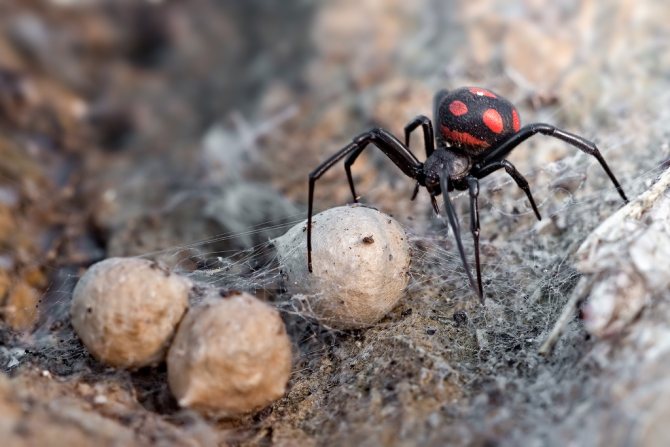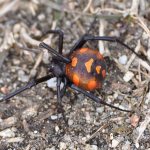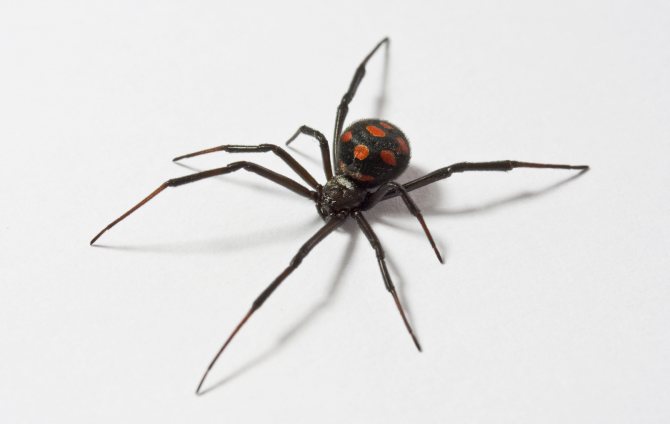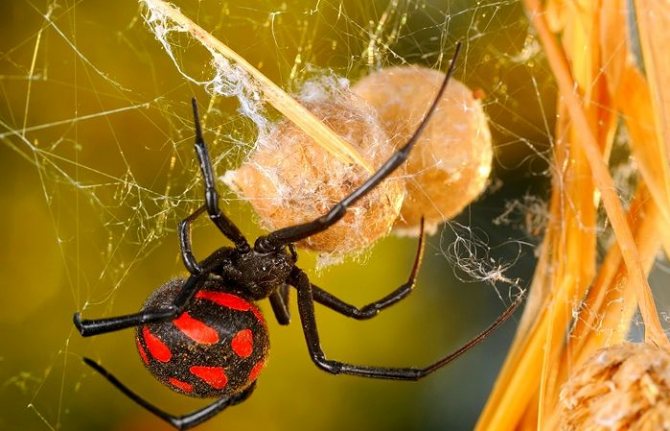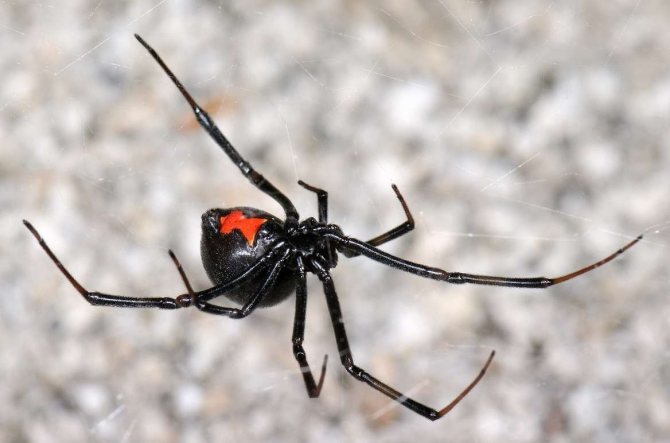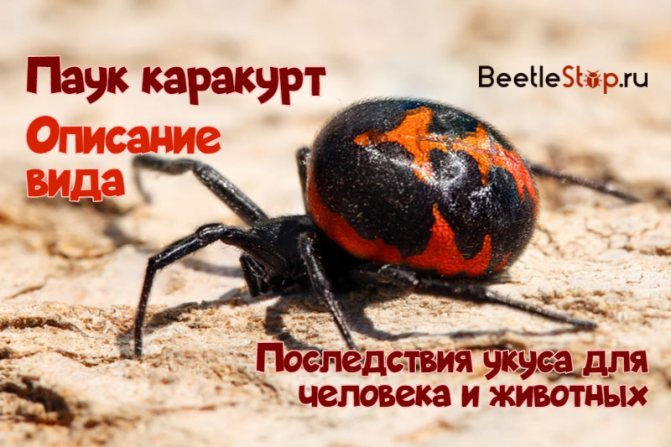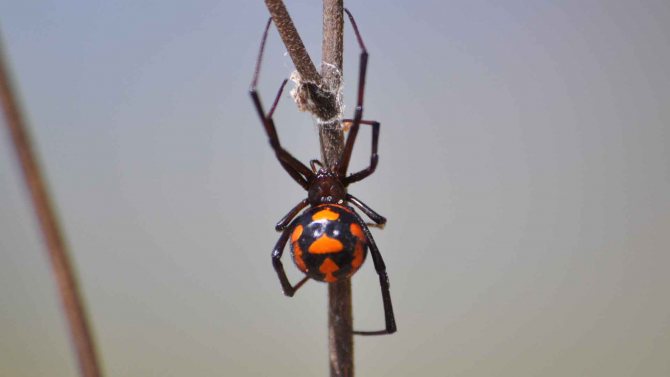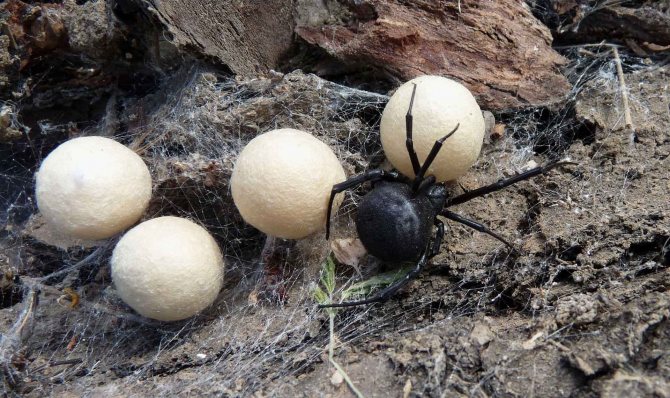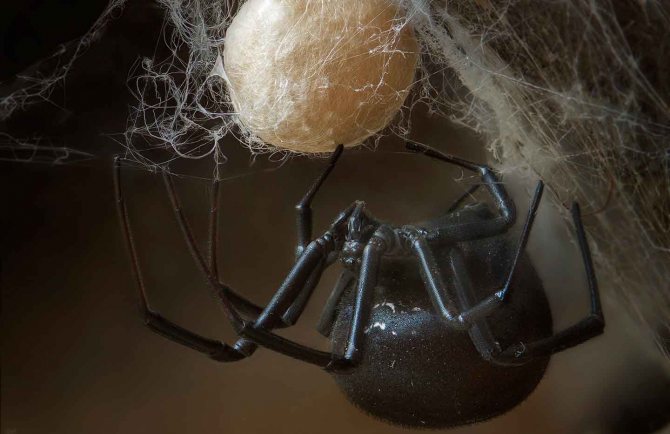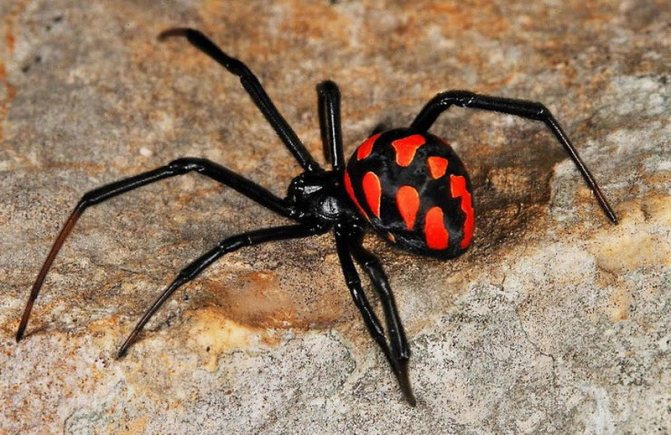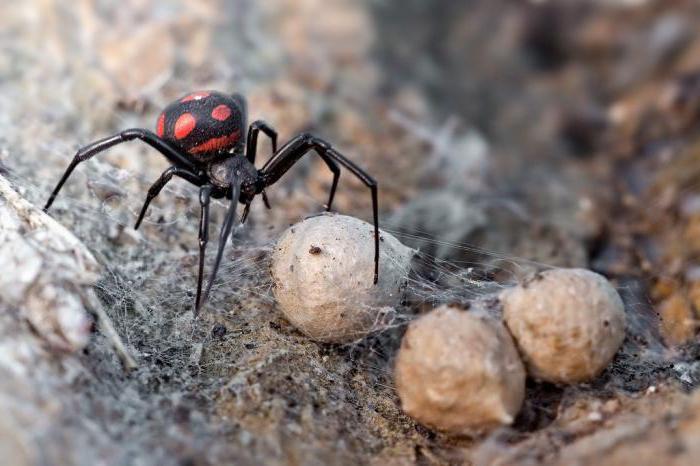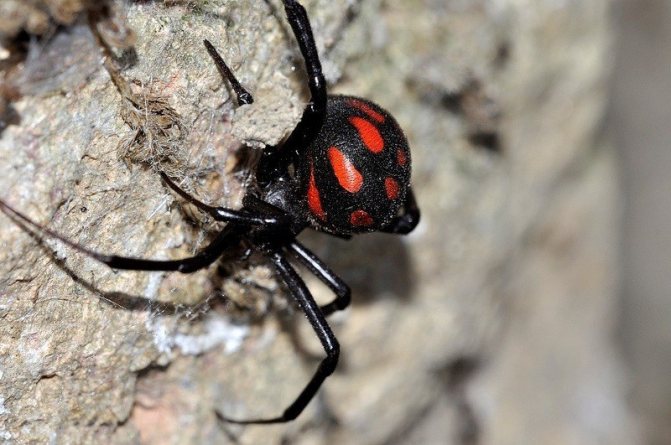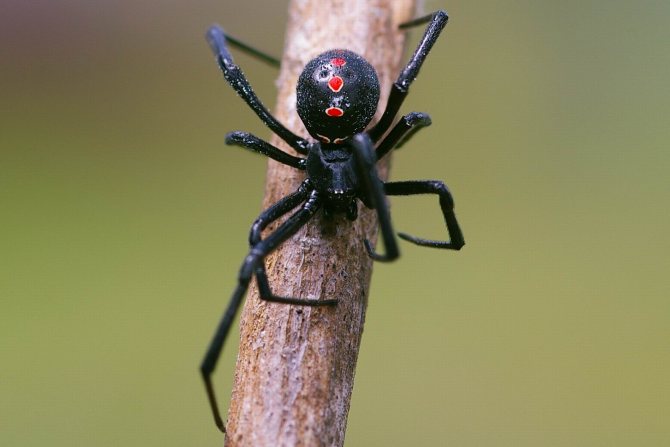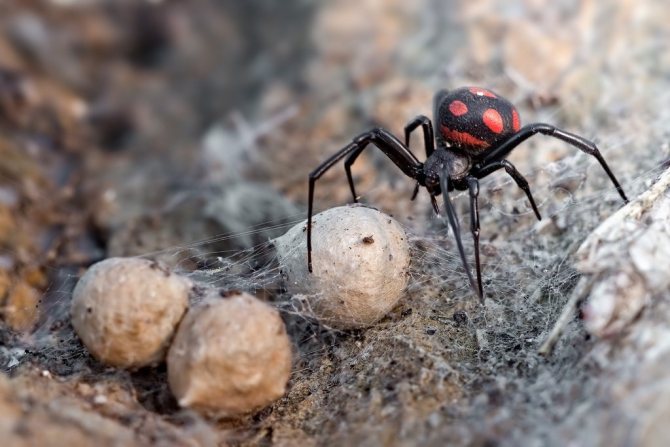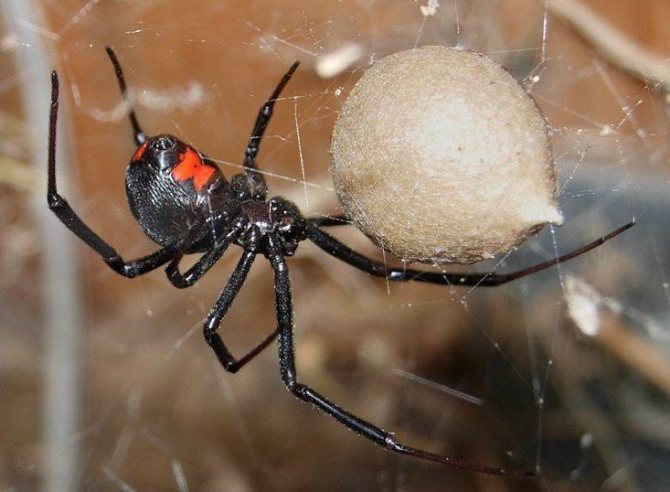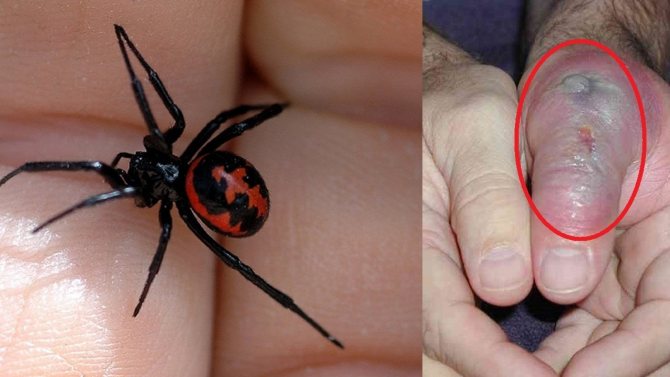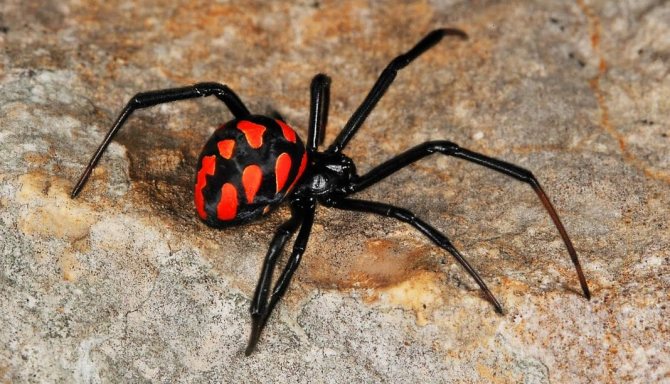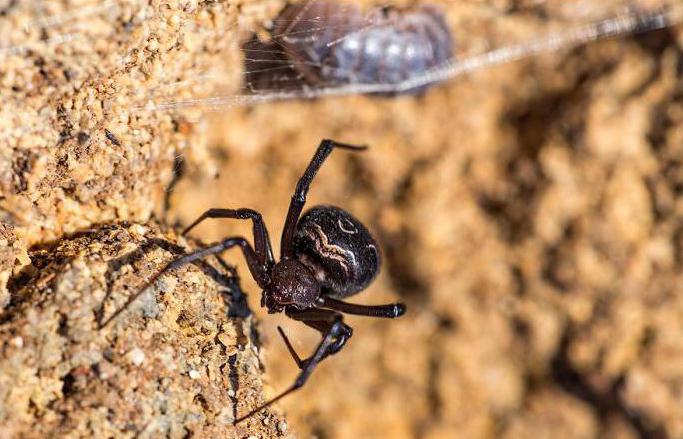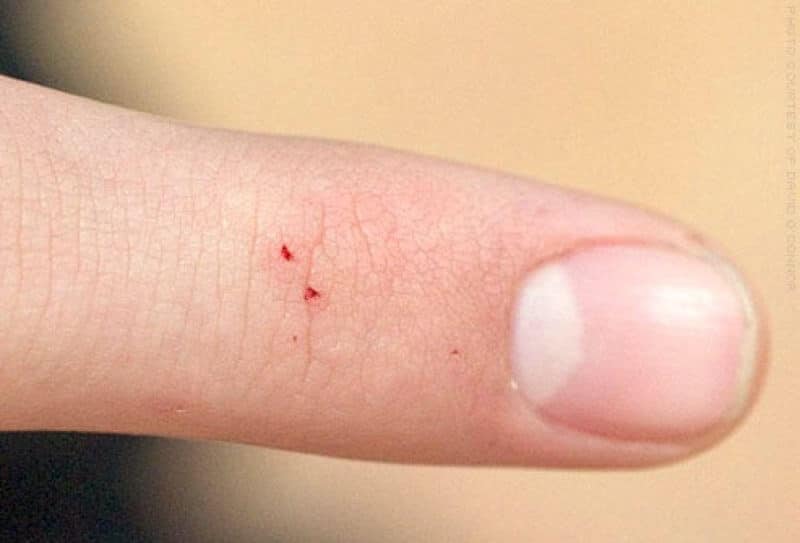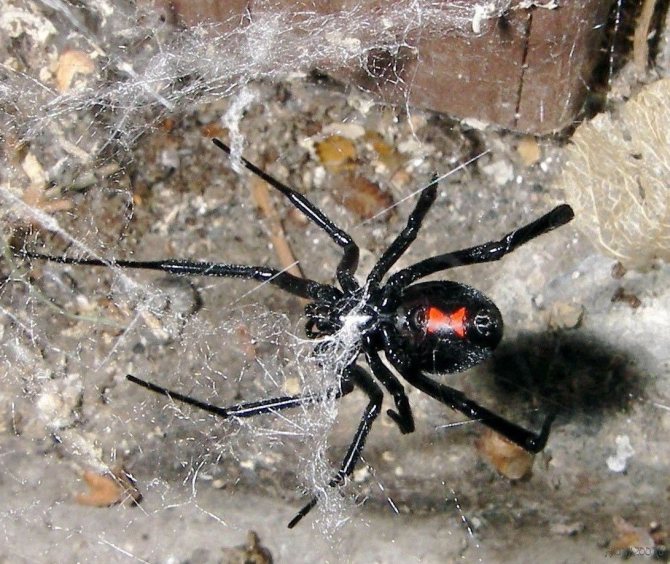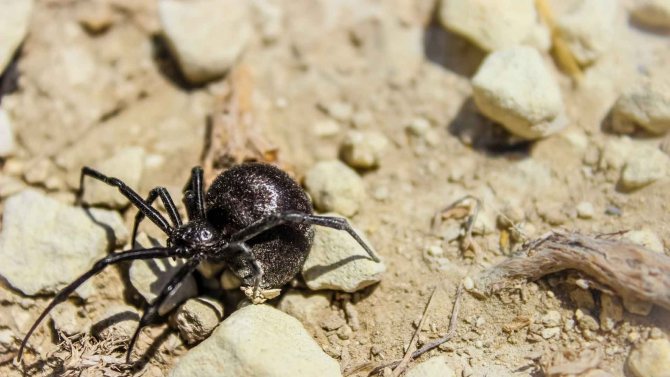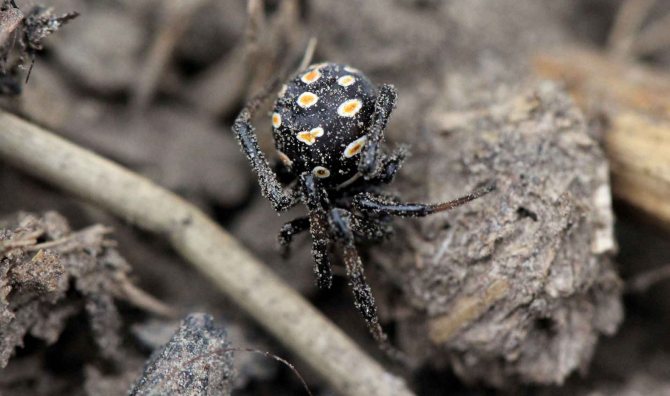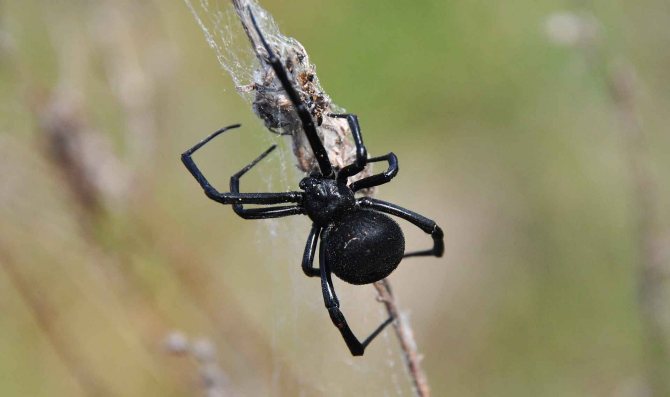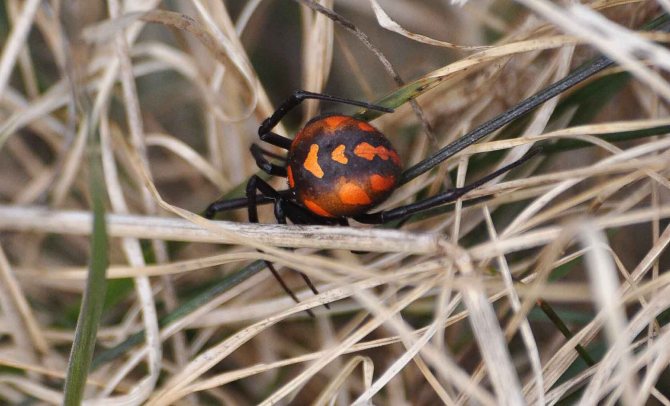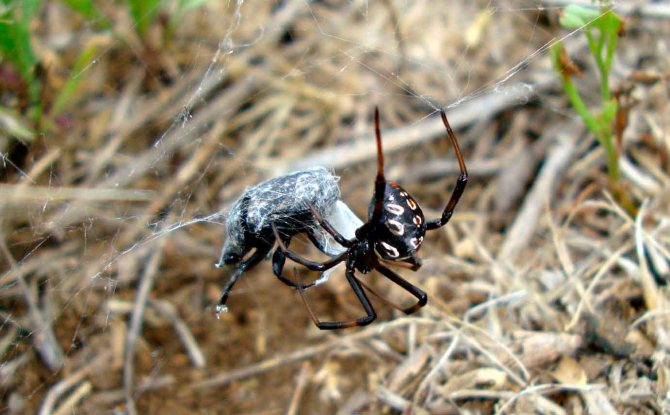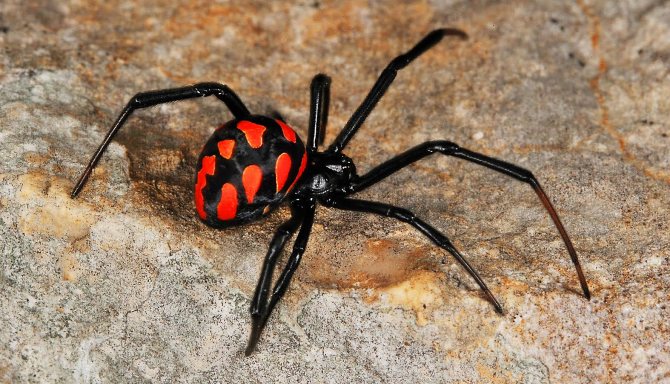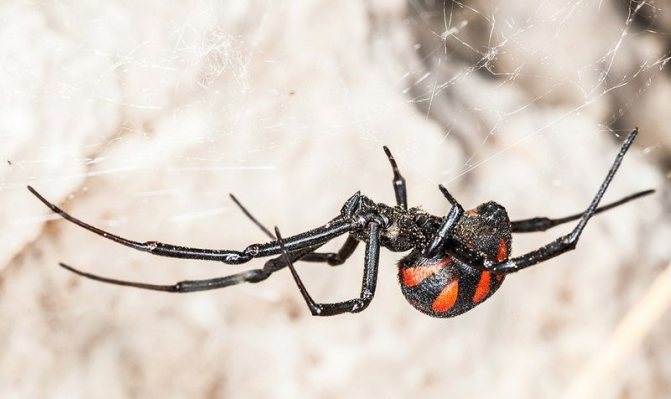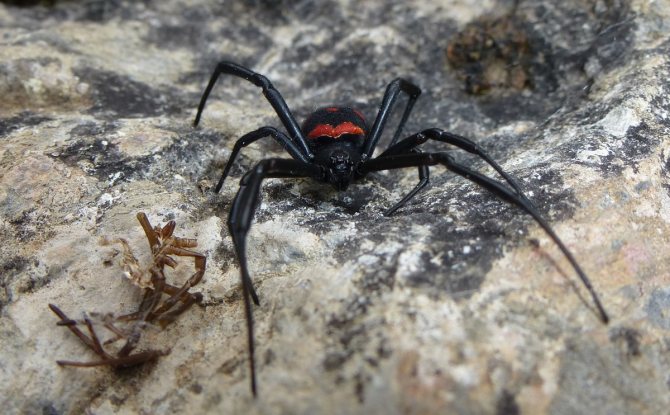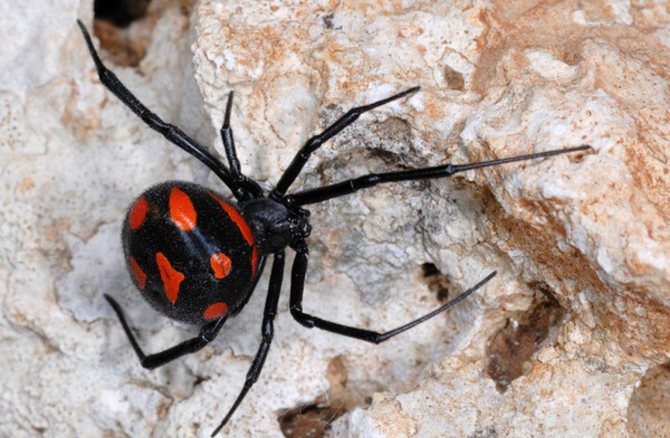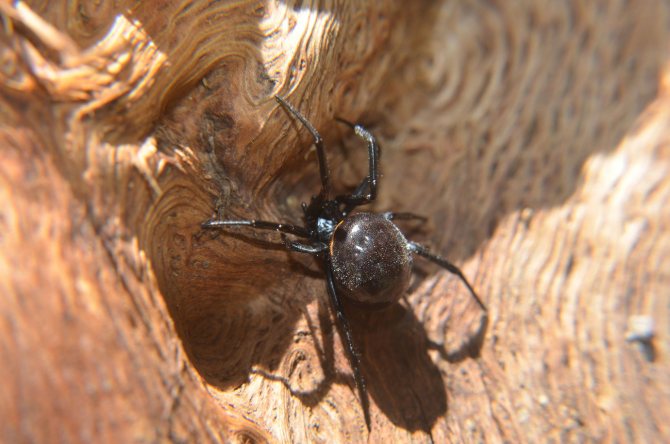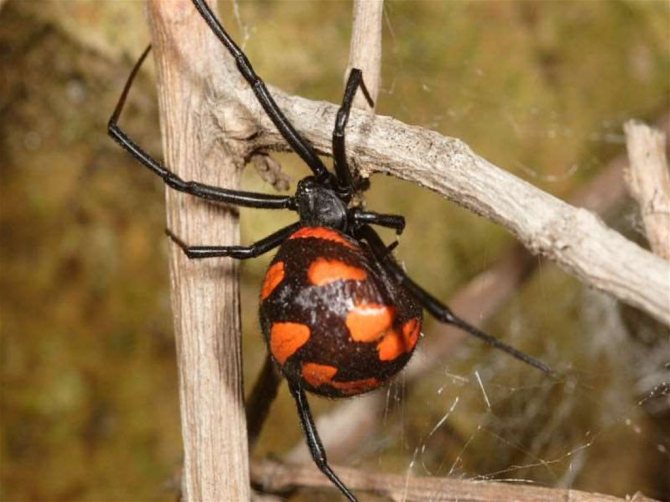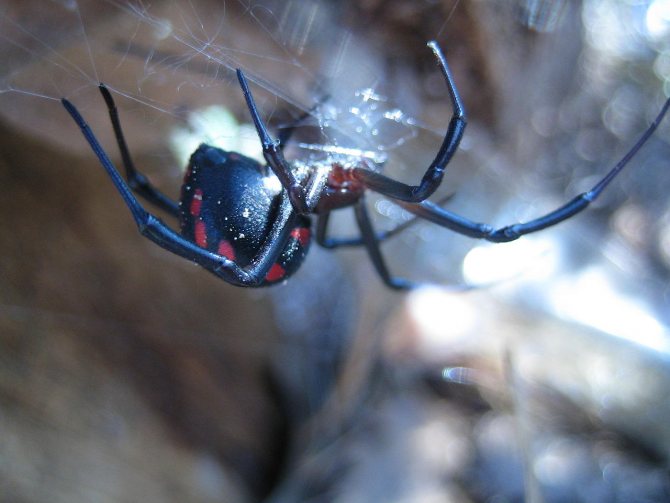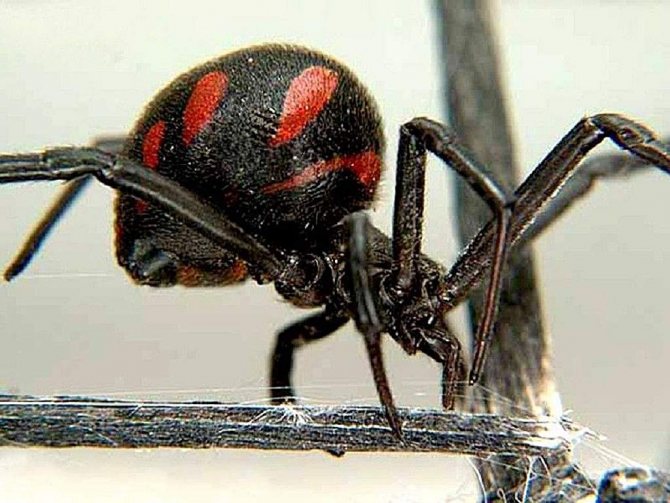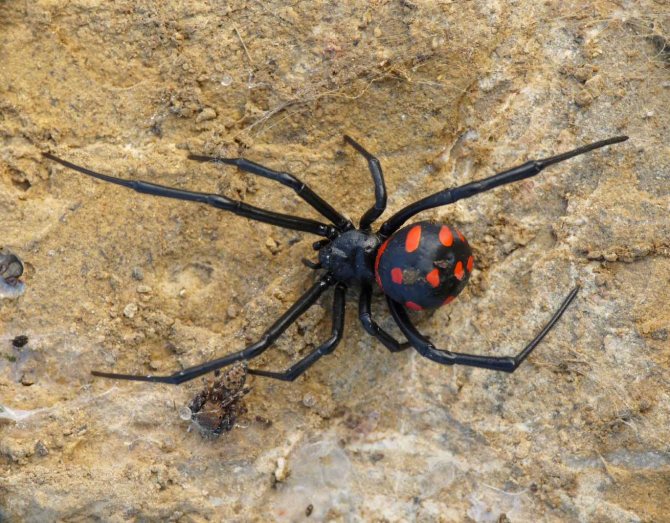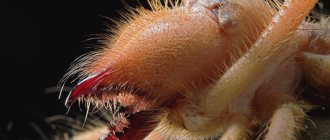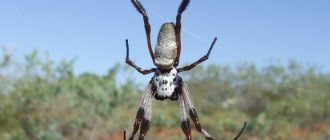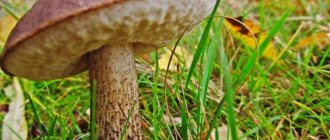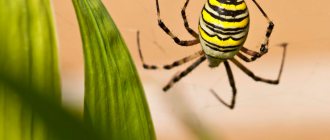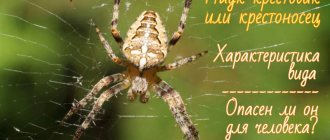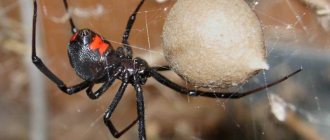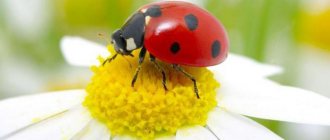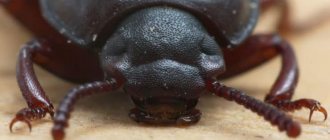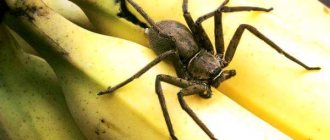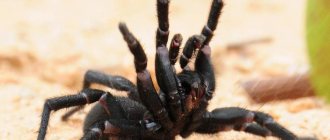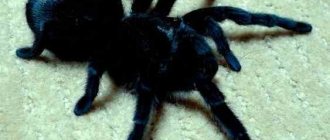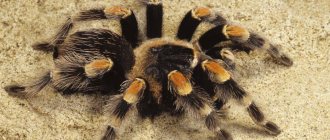17 August32902different animalskarakurtspidersharmful animals
Karakurt is a spider from the genus of black widows. There are many different dangerous animals on our planet. Everyone knows that a polar bear or a crocodile is a huge danger to humans. But these predators are huge and will not go unnoticed. You should know that creatures that are difficult to notice can pose a much greater danger, because they do not exceed a five-ruble coin in size. One of these is the karakurt spider. In this article you will find a description and a photo of the karakurt spider, as well as learn a lot of new and interesting things about this spider from the genus of black widows.
Scorpio
An endemic species of scorpion lives in Crimea. It is very small, only 35-40 mm long. The color is light yellow, the pincers are brownish. Meeting with him is a rarity and, rather, luck than misfortune. After all, his bite is not fatal. True, it causes poisoning of the body. With a bite, a very severe pain is felt, the place immediately swells.
Experts on snakes and insects argue that in the event of a human bite by any animal, the main enemy is not poison, but panic. It is she, firstly, that prevents a person from assessing the situation and taking the first measures, and secondly, panic contributes to the fact that the already unpleasant symptoms seem twice as painful and terrible.
Do you know that…
The most poisonous spider in the world, according to the Guinness Book of Records, is the Brazilian wandering spider. This spider got its name because it does not sit in one place and does not weave webs, but actively moves in search of food. He eats insects, other spiders, birds and lizards, and also loves bananas.
Some specimens of this spider are so dangerous that human death can occur within 20-30 minutes if you do not provide immediate assistance.
Karakurt (Latrodectus malmignatha)
In this chapter, we will meet with you the vast group of snake spiders (Theridiidae), weaving simple three-dimensional webs. But it is impossible to tell about all the representatives of this spider tribe in one chapter, so I decided to dwell on only one spider of this group - on the very, very ... The most poisonous, most interesting, most mysterious - the karakurt spider. Why, you ask, in a book dedicated to our "native" spiders, I talk about a karakurt living somewhere far in the south? And the fact of the matter is that karakurt is found not only in the south. Cases of finding this spider in the Moscow region are described, where I first met this amazing spider.
As a thirteen year old boy, passionately carried away by insects, lizards and all the other insanely interesting creatures, I caught a small black spider with a funny red speck on the underside of the abdomen. Gripping it tightly with two fingers, I carried the precious find home to add to my small insect collection. I did not know anything about the karakurt then and could not at all suspect a poisonous predator in the foundling. As I carried the spider, my thumb was in great pain. I unclenched my fingers and dropped the crumb, which was lost in the grass. My finger was swollen in front of my eyes, a purple infiltration appeared under the skin. After a few days, the infiltration resolved, but I remembered the meeting with the spider with pain in my arm for a week.As I read later, a red spot on the abdomen is a genus-specific sign of the karakurt and its "relatives". So you can say that I was "lucky" twice. Firstly, I found a karakurt in the suburbs, and, secondly, I felt the effect of the poison of this spider on myself. The fact is that, according to popular belief, only an adult female karakurt is able to bite through human skin. As I understand now, I was able to hit a small karakurt with a bite at about the third or fourth molt.
Karakurt is a medium-sized black spider, the size of a hazelnut, weaving unpretentious snares on the steppe slopes. Karakurt is the same legendary spider, whose adult female is capable of killing an adult camel with one bite (of course, this is in a hot southern climate, where high temperatures potentiate the effect of poison).
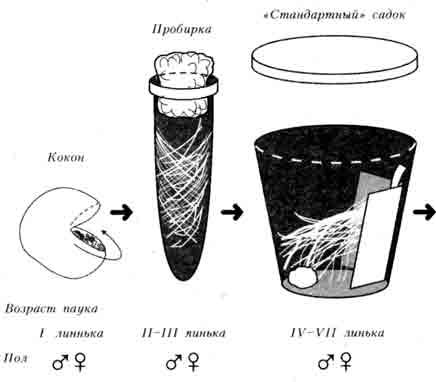
SCHEME OF CHANGING THE GARDENS
The main range of karakurt is Central Asia, Crimea, Caucasus. Karakurt is also found in Turkey, Iran, southern Europe and North Africa. Inhabits karakurt mainly steppe biotopes, where in uneven soil, among stones, it spreads its snares for hunting. From the overwintered cocoon with the first spring rays of the sun, small karakurt appear, which spent the whole winter inside the monastery woven by their mother. The shoots get out into the big world through a small hole in the wall of the cocoon, made by the strongest of the kids. In the cocoon, they have already undergone the first molt and are ready for the beginning of a new life for them. Right there, around the cocoon, karakurt spiders weave the first in their life chaotic snares, where they jointly hunt small insects. If the cold weather has dragged on, then young spiders molt in a cocoon up to three times, while feeding on their weak brothers, which allows at least some spiders from the brood to survive.
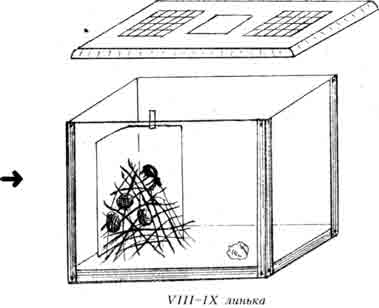

Spacious insectarium
A few days after the training hunt near the cocoon, the babies begin to prepare for their first journey in their life. Driven by a great instinct for migration, they try to climb high objects and overcome many meters of distance. When the next height is reached, the spider spins in place, determining the direction of the wind, and, considering the weather favorable for flights, releases a spider's thread. The wind picks it up, and the tiny traveler, climbing on the thread, soars into the air. This flight of karakurt is the answer to the question about the strange appearance of karakurt at a great distance from their usual habitat: the wind can carry a spider web and a weightless spider for thousands of kilometers. This is how they are brought to us, to the Central zone of Russia, where they can live comfortably until autumn. However, with the onset of cold weather, karakurt migrants perish.
Such free flights have a great biological meaning - the settlement of new territories and, most importantly, protection from incest (closely related crossbreeding). Under artificial conditions, with incest, already in the third or fourth generation, signs of degeneration are observed, manifested in the small number of offspring, uneven development of young animals, the appearance of a large number of pathological molts, and so on. Once in a new place, the spider loses interest in nomadic life and scatters its snares in a heap of stones, in uneven soil. Karakurt hunts and gains strength for its second journey, which will come as soon as the spider takes off its beautiful juvenile (children's) outfit: three rows of white dots over the black abdomen, and on the underside of the abdomen there is a red "hourglass" with a yellow trim. The spider sheds depending on how much prey it can catch. It often happens that, having occupied a "fishy" place, one spider can reach adulthood faster than the other (and will die of old age, too, earlier). Before molting, in two days, the spider loses its mobility and freezes somewhere in a secluded corner of the snare. At the moment of molting, the spider hangs itself upside down. The chitinous cuticle on the spider's cephalothorax bursts, and a small, as if crumpled, light creature appears from the already empty skin.Having survived an important stage in its life - molting, the spider clings to the threads of the snare with its legs and hangs. Its soft new cuticle expands in the air and finally hardens after a couple of days.
I note that with age, the color brightness fades away a little in males, while in females there are strong changes - they become absolutely black, except for an hourglass-shaped spot and residual elements of a white pattern on the upper side of the abdomen.
But maturation changes not only the color, but the whole appearance of the spiders. Females become noticeably larger, acquire a large abdomen. Males, against the background of females, look smaller, have a small abdomen and an extension on the pedipalps. In addition, males molt two fewer molts than females (that is, only seven times). After reaching puberty, males stop eating and go in search of a female. The threads pulled by the female during migration play the role of Ariadne's guiding thread for the male traveler. And now, having found her temporary web, spread in the deepening of the soil, he very carefully touches the signal threads with his legs, making themselves felt. Then he enters the snares of the female and with barely visible movements approaches her. If the male suddenly and abruptly invades the female's snares, then she can simply eat him, confusing him with the prey. Having approached to a respectful distance, the male begins the courtship process, which I have repeatedly observed in my cages, not only in karakurt, but also in South American "black widows". The male, shaking with his whole body, shakes the web; the female usually does not respond. Then, emboldened, the male tries to approach, but the female raises the front pair of legs in the air warningly. The male retreats, trying another strategic maneuver - he pulls forward the front pair of legs, “pats” the female's cephalothorax with them and throws cobweb threads on her with his hind legs. Frozen for a moment, the female, with a sharp movement of her legs, tears the male's threads that entangled her and makes a threatening attack towards the unlucky boyfriend.
Disappointed in this method of conquering the female's heart, the spider tries another maneuver - it begins to "bite" the female's legs, slowly approaching her abdomen. The female seems to like it, and she freezes, lowering her limbs. But any noise or negligence of the male - and the female again takes the pose of repelling the attack, and the unlucky boyfriend has to start all over again. Mating moment I
never observed, as it usually passes late at night. For all the time of my observations, the prevailing myth about the intransigence of female karakurt to the male sex has not been confirmed. I admit that this can happen when the female has gained insufficient weight for a future pregnancy, and in ideal conditions, I never allowed this to happen.
Some shades are brightly colored
One interesting fact: no matter how much I tried to get a hybrid of "black widow" and karakurt, all my efforts were doomed to failure. Even if the courtship period proceeded smoothly, the female still did not lay cocoons. This suggests that these are two biologically different species, and not varieties of one, as is sometimes written in the literature. Yes, and the male after such experiments, I found the next morning safe and sound, contrary to the statement that the female certainly eats the male after mating (hence the fateful name - "black widow").
Life after mating loses all meaning for the male. It hangs in the corner of the female's snare and feeds from her table, eating up the remains of her prey. Spending all free time huddled on the edge of the female's snare, the male slowly fades away within a week or two. If I put a male in a separate cage, then he did not even weave a snare - he would stretch two or three strings and hang on them, not even reacting to food. If I put the male next to another female, then he did not start courtship, but immediately became a priest.After mating, the female feeds heavily, gaining weight, and lays several clutches (usually 3-6 eggs), which she carefully swaddles with her hind legs into a dense cocoon. During August and September, the female takes care of the cocoons until the babies hatch from the eggs. Then the young awaits the first molt, and the female - death, which overtakes her in the fall. The little ones stay for the winter in a cocoon and wait for the first spring days to repeat the great cycle of Life again.
Male (below) and female (above) of one of the species of synanthropic snipe
My second meeting with karakurt happened again by chance. In early September, the phone rang - my old friend called me and asked me to pick up a lovely spider - a female and several of her cocoons with babies that had time to crawl all over his apartment. Terrariumist with many years of experience, he always brought interesting insects and other arthropods from vacation in Crimea. It happened that they were ordinary mantises staring in surprise, there were also nimble multi-legged centipedes, he also brought shaggy gray-brown tarantulas. This time, the prey turned out to be a female of “some kind of snake spider,” as my friend put it.
The next day I took a small plastic container, in which a large, hazelnut-sized black spider proudly sat on its snares. Its body was shaggy, two segments of the legs closer to the abdomen were thick, and the leg ended in a graceful thin segment, which gave the spider a refined, and, thanks to slow movements, even an "aristocratic" look. Despite the absence of a red genus-specific spot, I suspected a karakurt in my pet (the household knew him as a "Crimean spider") and hastened to share my discovery with a friend who kindly provided me with such an invaluable find for me. It is difficult to convey his scream in the telephone receiver when he found out that the "nice spiders" were climbing on the central heating radiator in his house ... My assumptions were confirmed: the young spiders that emerged from their cocoons had the notorious hourglass on their abdomens, which with age completely disappeared in females, but not in sexually mature males. In subsequent trolleys, this characteristic feature of my karakurt was preserved. Apparently, the melanistic color of adult females is a characteristic feature of the Crimean population of karakurt.
After examining my pet, I was able to start observing. The female slowly moved the cocoons away from my eyes (who knows what these strange people have in mind!), Carefully taking them with mobile pedipalps. Then she took the usual position on the snares - upside down, placing the two front pairs of limbs on the signal threads of the cobweb. In fact, this is a typical waiting position for all snake spiders. Signal threads come from the most distant edges of the snare, and the insect caught in a deadly trap touched them first of all, as if by a bell notifying the owner of the snare about an unexpected guest.
With my light hand, the game was not slow to appear - a large cockroach. And then the female hurried to the long-awaited dinner. Approaching the cockroach, she bit several strands, clearing the way for the prey, and then performed a simple strategic maneuver. Being at a safe distance from the convulsively beating insect, the female began to spray the victim with a liquid cobweb produced by arachnoid warts. The web immediately froze, forming a dense cocoon, depriving the prey of even a hint of movement. A deadly bite followed. I have not observed a similar method of attacking prey in any species of snare, which usually cocoon prey with the help of a rear pair of legs. In general, if the prey is large, the spider, having killed the prey, begins external digestion of food, turning the soft tissues of the insect into a nutritious broth. Then the spider waits for the end of the dissolution of the prey tissues and, after carefully biting the holding threads, transfers the lunch to a place convenient for the meal.After a feast, which can last a day, the empty cuticles were thrown off the cobweb. Apparently, the liquid web attack method is based on a stronger and more poisonous secret of digestive enzymes, which led to the formation of a method that allows you to immobilize large prey, preparing it for the subsequent aforementioned stages. At the same time, the spider braided small prey into a cocoon, like the rest of the domestic snares. Thus, karakurt has its own weapons of attack for insects of various sizes.
Keeping and breeding a karakurt in captivity is not difficult, especially if you strictly follow the methodology I have developed below.
Having laid the cocoons, the female carefully monitors them - outweighs them in more convenient places for leaving on the cobweb, processes them with saliva. As they mature, the cocoons darken. It is the dark bodies of young spiders that show through. As soon as the cocoon darkens, I transfer it to a separate container with tweezers and carefully open the wall with nail scissors. In the opened cocoon, small light brown spiders are visible, which have just hatched. That is why they are inactive and sit close to each other. When the cocoon is opened, a strong bitter tart smell is noted, inherent only in small karakurt. This is the distinguishing feature of the karakurt cocoon from any other tenetniks. Having opened the karakurt cocoon once, you will never again confuse it with the cocoon of another tenet.
Karakurt remain inside the cocoon for another week. There, their first molt occurs, after which the spiders acquire a glossy black color with white dots on the back. After emerging from the cocoon, newborns pull the threads, forming a common net on which they hang and do not feed for two to three days. During this period, I do not disturb the young. Later, the spiders begin to actively move, conflict over territory on common snares, demonstrate a "waiting pose" (the spider is pulled up, the front pair of legs is extended to the signal snares). On these grounds, I determine the beginning of the placement of young animals. To do this, I use small bubbles from under nasal drops or test tubes, which I plug with a cotton plug. Within a day or two, spiders weave snares in a new place and take a waiting position, because it is time for the first feeding. So that the weak spider can easily cope with the prey, for the first time I give the small karakurt a crushed or killed cricket. As I grow, I begin to give a slightly crushed cricket, so that with its active movements it provokes the hunting instinct and the spiders do not lose their tone. Live crickets and cockroaches, as a rule, can get out of the net, so I recommend pressing them down before feeding them. By the way, during molting, this will allow spiders to avoid additional unwanted injuries that non-paralyzed crickets can cause. Naturally, as I grow older, I feed the karakurt more and more large insects.
My technique of spider placement after the first molt allows you to keep the maximum offspring (about 90%). There is another, the so-called "joint method" of keeping young stock from the second to the third or fourth molt. This technique is more often used by German terrariumists when breeding various types of tenetniki. The advantages of the technique are that all the young are contained in one vessel, and the owner of the insectarium does not need to calibrate the killed crickets, since spiders can jointly eat large prey. The disadvantages of this approach to keeping are manifested in the fact that weak individuals quickly die from malnutrition, and as the juveniles grow, cannibalism begins. Therefore, the number of grown individuals bred by this method varies within 50%. In addition, the spiders still have to be seated in separate containers no later than the fourth molt.
In general, during the growth of spiders, it is necessary to change the containers at least three times, depending on the size of the spiders, which is clearly seen in the presented diagram. Until the third molt, I keep the karakurt in a test tube, and after the third molt I transfer it to a standard cage with a paper corner and a wet cotton swab.
The next stage of planting begins after the fourth or fifth molt, when the sex of the young is determined. The only visual difference between the sexes is the swollen pedipalps in the male, while the color and size of both sexes are the same. I leave the males in the same room, but I plant the females in a larger cage (18x 13x 13 cm), where I subsequently mate.
And finally, the spiders have matured. The male was brightly colored black with white and red, and the female had reached the size of a hazelnut. It is now time to think about offspring. The male's appetite at this time is poor - he will just suck on the prey and move away, but does not fit the large one at all. But there is nothing to worry about, the spider is not sick, it’s just time to look for a female. And the female, on the contrary, eats a lot and greedily, gaining a supply for future offspring. The most difficult stage in mating is getting the partners down. To prevent the female from eating the male, I feed her “for slaughter” for a week. And when her body becomes noticeably rounded and she begins to react sluggishly to food, then it's time to put future parents in bed.
I put the male in the corner of the female's snare certainly in the evening, when the minimum amount of noise stimuli that can irritate the female. If the female, in response to the courtship of the male, behaves too aggressively, lunges when he approaches, then you can distract her by giving her a crushed cricket. In my observations, this red herring has always been successful. After courtship, which I talked about earlier, mating occurs, after which the main task of the amateur is to provide the female with a large amount of various food. If it is possible to feed the female with insects caught in nature, and not grown at home, then this must be taken advantage of. During the laying of cocoons, I also feed the females abundantly and monitor the hygiene of the cage more thoroughly by regularly removing uneaten insects and excrement. As a rule, there are from 3 to 5 cocoons in a clutch, but large females are capable of laying more than a dozen. It has been established that the longer you cultivate in captivity, the less cocoons are laid by females, and the cocoons themselves lose their natural density, which, most likely, is also associated with the phenomena of inbreeding.
If the laying of cocoons occurred at an inconvenient time for you and you cannot take care of the babies, then as soon as they darken a little, you can safely place the cocoons in the vegetable section of the refrigerator for wintering. This procedure is completely safe for babies, since in nature they hibernate in cocoons, and by placing them in the refrigerator, you simply imitate natural hibernation. The cocoon does not require humidification of the air, but at low temperatures any increase in humidity is fraught with the development of a fungus in young spiders. Observe the cocoon periodically and, as soon as it turns black, open its wall. The darkening of the cocoon is due to the fact that the spiders shed, becoming black instead of light brown. If you see that the spiders have already put on a black outfit, then put all your business aside and save the spiders. Even if they are forcibly hibernating in the refrigerator, cannibalism may already begin at this stage. After removing the karakurt from the refrigerator, place them in the cages, or grow them together. When cocoons are incubated without cooling, the development process proceeds faster (about a month) and, according to my observations, does not in any way affect the further development of spiders and their reproduction.
And finally, I'll tell you about the toxicity of karakurt.The poison of karakurt is a protein, and different parts of its poisonous secretion act on invertebrates and vertebrates. Nevertheless, there is a general neurotropic direction of the action of the karakurt venom. In this case, the bitten is affected by the neuromuscular synapse, which disrupts the transmission of the nerve impulse to the muscle fiber, paralyzing the work of the latter. When exposed to the respiratory muscles, death occurs from respiratory arrest.
The literature describes cases of a human being bitten by a karakurt. This can happen during the migration of sexually mature spiders, when they climb into the human dwelling. If a person is bitten by an adult female karakurt, then at first the victim will feel a slight pain at the site of the bite, which will intensify only after 15-20 minutes. Therefore, the fact of the bite itself may not be recognized. I know from my own sad experience that this is really so. I could not find the wounds from the bite right away, noting only the not expressed infiltration that appeared, although I felt the pain from the bite of the karakurt instantly. This may be due to a good blood supply to the hand and, accordingly, the rapid spread of the venom. A little later, after about two hours, cramping abdominal pain will join the pain in the area of the bite, resembling the clinical picture of an "acute abdomen". At the same time, there is an increase in body temperature to subfebrile, joint pain, convulsions and arrhythmia. The place bitten by a spider swells, the pain sharply increases. Symptoms of the bite subside gradually only after one to two weeks, but a periodic deterioration in the condition can be felt for six months and manifested by sudden fainting, bouts of dizziness, shortness of breath.
When I described my first acquaintance with karakurt, I said that I tolerated the bite of this predator quite easily. I believe that in my case everything was successful only because I just received a very small dose of poison, especially from a very young karakurt. The bite of an adult female is much more difficult and can lead a person to death.
First aid for a bite in case of its early recognition (which happens, alas, rarely) is a simple cauterization of the lesion site with a match. This is a painful but effective method: the bite wound is science so small that it only affects the upper layers of the skin. The fire that the match gives is enough to cause denaturation of the proteins of the poison. But the most effective remedy for a karakurt bite is an anti-karakurt serum. It is prepared by introducing small doses of karakurt poison to animals (most often horses), for which antibodies are produced in the animal's body. Since the serum contains a lot of foreign protein, when it is administered to a person, allergic complications are possible, up to anaphylactic shock. Therefore, it is best to administer the anticaracourt serum "under the guise" of therapeutic doses of prednisolone or another hormonal drug that can suppress a possible allergic reaction.
There is a popular belief that in the event of a spider or snake bite, you should take a dose of alcohol. This misconception can cost a bite victim his life. Alcohol increases the rate of blood circulation, increasing and accelerating the release of poison from soft tissues into the general circulation.
The second common misconception is a tourniquet. The fact is that the poison still remains in the wound, and after removing the tourniquet, it quickly enters the bloodstream, but already together with inflammatory mediators, derivatives of arachidonic acid (prostaglandins, etc.), which are secreted by the cells of the vessel walls in response to mechanical damage to blood vessels with a tourniquet. These inflammatory mediators not only themselves have a toxic effect on the body, but also potentiate the action of the poison itself. Therefore, the only way to slow down the entry of poison into the body is to minimize the physical efforts of the victim.In addition, transfer the bitten person to the shade from under direct sunlight, since in the heat, blood circulation increases to increase heat transfer, and at the same time the absorption of the poison increases. And the last tip - apply a cold compress to the bitten area. The cold causes vasospasm, which slows down the absorption of the poison from the wound, and part of the poison can still be inactivated by the human immune system.
A few words should be said about the safety measures of an amateur who decided to breed a karakurt. I advise you to use unbreakable plastic containers whenever possible, and also to keep spiders in cages with double protection, that is, placing several small containers in one large one.
It is no coincidence that I stopped at the cultivation of karakurt in such detail. Firstly, many conditions in the breeding of spiders of different groups are similar, and knowing in detail the breeding technique of one species, it will be much easier for you to work out the same technique for another species. For example, using this technique, you can breed in captivity and the most common spider - synanthropic (Steatoda grossa),
as well as a number of other representatives of the group. The second reason for my detailed story about karakurt lies in the fact that this spider is a very interesting and rare specimen for our strip. Therefore, having lost your culture, you cannot easily go and catch new spiders in the nearest forest for your collection. And, finally, to be honest, karakurt is one of my favorite spiders. I paid a lot of attention to observing him and his breeding. I would like to note that the breeding of karakurt does not require any technical equipment - they have enough room temperature and natural light. Moreover, these spiders grow well even in complete darkness. In captive breeding of karakurt, I would draw your attention to one, but very significant difficulty. I mean incest and the subsequent degeneration of the domestic population. To avoid this, it is necessary in four to five generations to manage to get new karakurt spiders. These can be spiders caught in their natural habitat, or specimens from a different domestic population provided to you by hobby colleagues.
More interesting articles on the topic:
Drassodes stone (Drassodes lapidosus)
Drassodes stone (Drassodes lapidosus) Stone Drassodes - medium-sized spider: it is rarely possible to stand
Wingless reduviol (Reduviolus apterus)
Wingless reduviol (Reduviolus apterus) The sunset was burning down with scarlet colors. Crimson disc of the sun me
Drupe (Lithobius forficatus)
Drupe (Lithobius forficatus) Legendary centipedes - inhabitants of tropical forests and subtr
Common scorpionfish (Panorpa communis)
Scorpionfish common (Panorpa communis) In the insectarium, one of the most whimsical and complex
SQUAD OF CARE (DERMAPTERA)
THE ORDER OF Elytra (DERMAPTERA) Insects of this order are characterized by short elytra, gr
Conclusion
Conclusion This is the end of our acquaintance with domestic invertebrates. We learned a lot
Brief description of insects
The karakurt spider (Latrodectus tredecimguttatus) belongs to the genus of black widows. The name is of Turkic origin and is used on the territory of the CIS and the neighboring countries of Central Asia. The first part of the word "punishment" does not cause confusion and means "black". The second part is usually translated as "worm". And here doubts arise.
Blister beetle
Medium-sized beetles. There are also large individuals up to two centimeters long. Brightly colored. In Russia, there are about 150 species that live from subtropics to temperate latitudes. Inhabited by forests and woodlands. The forests of the Krasnodar Territory are very rich in these species.
Asian hornet
In terms of its size, it is the largest in the world. Its dimensions reach up to 5 centimeters. The wingspan exceeds 7.5 centimeters. Russia "sheltered" this giant hornet in the Primorsky Territory.
Gastric gadfly
This family is very harmful and parasitic in the state of larvae on a variety of domestic animals and people. The most common type of poisonous flies. The female lays her offspring (eggs) in horses, in mules. It is found almost throughout Russia. The life span is short from 3 days to 20 days.
An omnivorous hunter. They are found singly (solitary) and when flying in groups or in a whole swarm (social wasps).Armed with a poisonous sting and jaws wasp. Attacks and bites people, mostly on the defensive. The habitat of this insect is very wide (subtropical - temperate latitudes).
Representatives of this species reach sizes from 7mm to 14mm. Up to 250,000 individuals can live in an anthill. The ginger ant is a forest orderly and seems to be harmless. But it seems so for the first time. When a group of ants or an anthill as a whole is threatened, a whole horde of stinging insects can attack you. All the temperate forests of our country are inhabited by these insects. Very often found in the forests of the Crimean mountains.
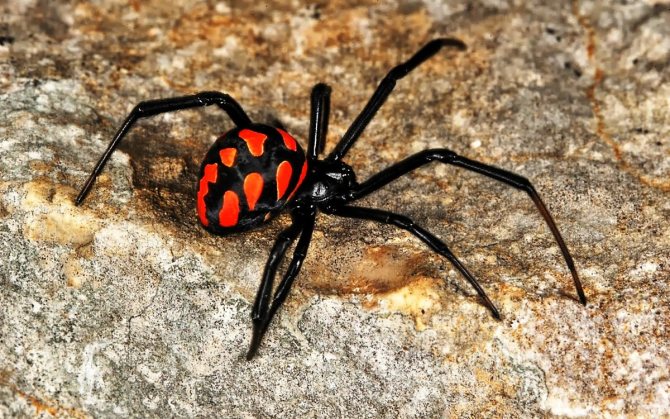

The body length of males reaches 6 mm, and of females 13 mm. They differ from each other mainly in the size and color of the limbs. The color ranges from dark brown to black.
The cephalothorax and abdomen are approximately the same in length. Chelicerae are relatively small and vertical. In the center of the black or brown abdomen, a pattern of transverse whitish or orange stripes is visible. There is often a light triangle behind it.
Females' legs are dark brown, and males are covered with additional yellow-brown stripes.
The lifespan of females of Paikull's steatode reaches 5-6 years. Males live 1-1.5 years.
First aid for a spider bite
Not everyone can distinguish one type of spider from another, despite the fact that the colors and patterns on their abdomens are different. And in terms of the size and length of the legs, they all differ from each other. However, people often start to panic and simply do not pay attention to what their abuser looks like.
Symptoms in most cases begin to appear rather quickly and first aid should also be prompt, but thoughtful.
- The first thing to do is rinse the wound with soapy water.
- The next step should be to prevent the spread of the poison. This is achieved in two ways: you should immobilize the affected limb with a splint and apply a tight bandage above the bite site, thereby reducing blood circulation.
- It is worth applying a cold compress to the wound itself, which will also delay the action and spread of the poison.
- Heavy drinking will also be a reducing factor. It will also help remove poison from the body.
- In order to relieve painful symptoms, you can give the victim an aspirin tablet.
Having done all this, you should not calm down. It is imperative to take the victim to the doctor, even if he is a few kilometers away. The clinic and help will be more qualified and will be able to take emergency measures in case of complications.
Of course, you can add some more aspects, highlighting the question: are there poisonous spiders in Russia and what to do if you come across them. But this information will already be for specialists. Ordinary people need to remember that playing and having fun with spiders is not worth it in any case. But you shouldn't just destroy them either.
Appearance and features
Karakurt can hunt both at night and during the day. Their cobwebs are not weaved in the correct shape, like orb-web spiders, but in a disorderly heap of trapping threads. The cobweb is also oriented not like other tenetniks - vertically, but in a horizontal plane. The main prey for spiders is locusts and grasshoppers.
These invertebrates usually move along the ground. A spider web located horizontally near the habitat of the arthropod is better suited for catching such game. The karakurt itself can wait for the victim, sitting in a shelter above the cobweb. For a dwelling, karakurt chooses holes of rodents or openings of ventilation systems.
The life span of karakurt is less than a year. The fry that emerged from the eggs in April become capable of breeding in June. At this time, spiders begin to migrate, looking for secluded, protected from heat places. In hiding places, they weave temporary mating nets.
After fertilization, the female eats the male and goes in search of a suitable place where she can lay eggs. Having found a suitable shelter, the spider hangs 2-4 cocoons with eggs in it. In April, hatched young growth on cobwebs scatters to new habitats.
We suggest that you familiarize yourself with: How to remove parasites from the body
Females of karakurt differ from males in both appearance and size.
If the males are frail, black and no more than 7 mm in length, then the females are simply heroes: about 1 cm in length (there are also individuals up to 2 cm in length) with long three-centimeter legs - the models would be envious.
And they are rare beauties - the back is decorated with red polka dots.
Spiders can be called aristocrats, because they have blue blood.
This is due to the fact that they have hemocyanin in their blood, not hemoglobin, that is, it is not iron that is responsible for the color of the blood, but copper.
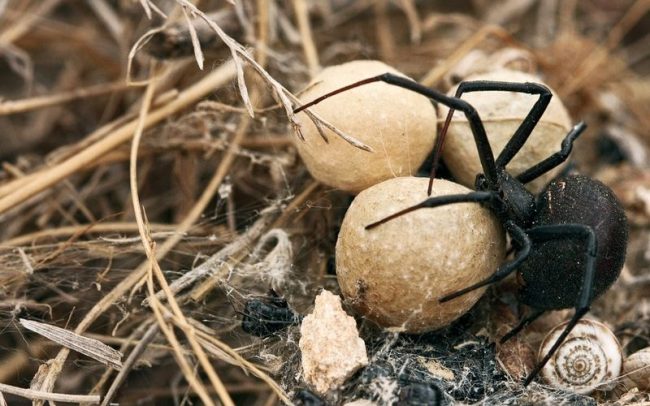

Spiders can be called aristocrats, because they have blue blood. This is due to the fact that they have hemocyanin in their blood, not hemoglobin, that is, not iron, but copper is responsible for the color of blood
Global warming has caused spiders to refuse to sleep in winter.
In autumn, when the first frosts appear, the soil becomes cold, the spiders die en masse.
But at the same time they manage to leave offspring.
Spiders grow in cocoons - they are warm and comfortable there, and come out of their houses only in summer.
Then - in July, August, they can bite and inject poison under the skin.
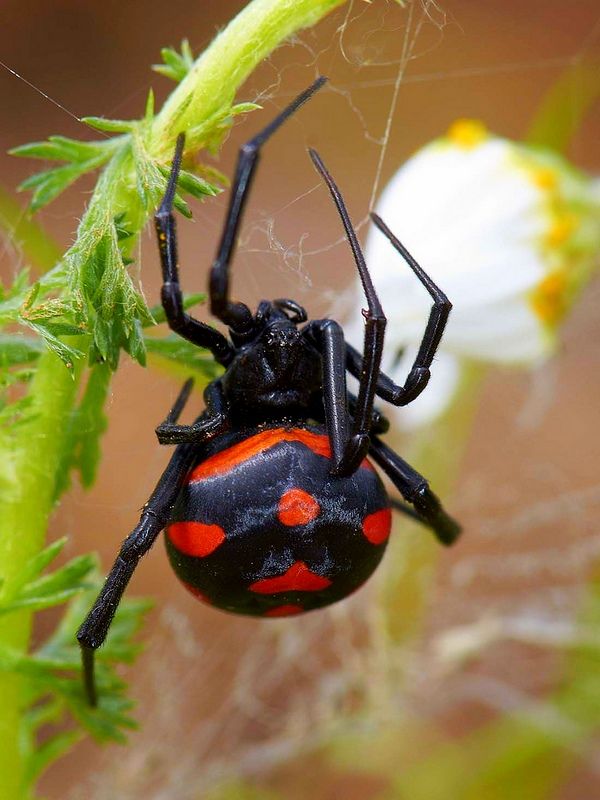

Karakurt is a predator, and its digestive system is extraintestinal. Attacking the victim, the spider pierces it with its upper jaws (chelicera) and injects poison. Moreover, he makes several such injections so that the "food" is prepared faster. When everything is digested, karakurt sucks the contents
Bites
Having given an idea of the black widow as an animal, we turn to the main part of our story - the bites of the karakurt. Immediately, you need to identify two main positions related to this:
- A black widow bite can be fatal.
- Spiders are not the first to attack humans.
Symptoms
To begin with, let's designate the symptoms of a karakurt bite, which appear very quickly.
- Within 10-15 minutes, all the muscles in the body begin to ache, as is the case with flu or other colds. The muscles of the chest, abdomen, and lumbar region hurt the most.
- In addition, heart rate increases, shortness of breath appears, dizzy, tremors of the limbs and even priapism in men.
- After this, there is a general weakness of the body, it seems that the limbs do not obey the person, vomiting appears.
- Further, there is a nervous exhaustion of the human body and depression may occur.
- A person's consciousness becomes cloudy, and he ceases to be aware of reality and to recognize even people close to him.
If the antidote is not administered in time, the physical death of a person may occur. However, it is not at all necessary that all karakurt bites are fatal to humans. Firstly, people with increased immunity will tolerate the bite much more easily than those who are weakened by diseases, or those who have an increased allergic reaction to poisons. Secondly, the greatest concentration of poison is observed in black widows during the mating season and after laying eggs, in other seasons the bites are less terrible.
Reference! Males of karakurt are not able to bite through human skin, therefore they are not dangerous for people and most animals.
What to do after a bite
The most effective way after a bite is to immediately cauterize the wound. This allows you to destroy the poison, preventing it from spreading through the blood through the body. The fact is that the female bites through the skin only half a millimeter, and for some time the poison is concentrated practically on the surface.
You can cauterize the wound from a bite directly with the head of a match, or by heating any metal object at hand on the fire:
- blade of knife;
- cutlery;
- house key or car;
- metal comb.
Attention! Cauterization should be performed in the first 10 (!) Minutes after the bite. After this time, the poison will walk through the body.
Everyone knows what to do next - immediately contact the nearest medical institution, which will provide the required assistance. In regions where the black widow is common, there is almost always the necessary serum, which is designed to neutralize the poison.
In an extreme case, when the necessary remedy was not found, an intravenous injection of ordinary potassium permanganate in a concentration of 2-4 percent or magnesium sulfate - 10-15 percent can alleviate the patient's fate.
After medical procedures, the patient should be given plenty of fluids to remove the poison from the body and a hot bath to reduce painful sensations. It is also a good idea to take pain relievers and sleeping pills, for healthy sleep is of great benefit to the body weakened from the bite.
Animal bites by karakurt
Different animals react ambiguously to black widow bites. Horses and camels suffer the most from it, including death, which in some regions is a real scourge for agriculture. Also, many rodents die from the poison of karakurt.
At the same time, dogs, hedgehogs, amphibians and reptiles are practically insensitive to the poison of karakurt.
Now it's time to watch the video about the black widow. Watch a report from America, filmed by our former compatriot.
Where is found
Karakurt can be found on the territory of the countries of the former Soviet Union:
- In Kazakhstan. Most often in desert areas.
- In the steppes of Kyrgyzstan.
- In Russia, they live throughout the south of the country. Most often found in the Astrakhan and Rostov regions, in the Krasnodar Territory, in the South Urals. In recent years, they began to come across in the Saratov, Volgograd and Novosibirsk regions, in Altai.
- In Crimea, practically throughout the entire territory of the peninsula.
- In Ukraine. In cities in the south, which have access to the Black and Azov Seas, as well as in some cities in the east and south (Donetsk, Dnepropetrovsk, Zaporozhye and Mariupol).
- In Azerbaijan.
- In Kyrgyzstan.
In countries located on the coast of the Mediterranean, Adriatic and Caspian seas. Ranging from southern Europe to the Near and Middle East, as well as North Africa.
Its habitat is increasing every year. Over the past few years, karakurt has been seen in more northern regions of Russia and Eastern Europe, even in the Moscow region. Although, such a climate is completely inappropriate for him and with the onset of cold weather the spider itself and its cocoons die.
Crimean karakurt
The most dangerous representative of the poisonous inhabitants of the Crimea, even more dangerous than the Crimean steppe viper. Inhabits the entire territory of the peninsula. It is massively found around Koyashskoye Lake.
Description
Appearance
The name of the insect is interpreted in different ways: translated from the Turkic language "kara" (black) and "kurt" (worm), and from the Latin language Latrodectus (biting robber), tredecimguttatus (13 spots). The Latin version of the name most accurately describes the appearance of the spider, which is predominantly black with 13 bright orange spots on the surface of the abdomen. With maturation, the spots gradually disappear and the insect darkens.
The average size varies from 4 to 20 mm, depending on gender. The female is larger than the male and has tentacles several millimeters longer. The abdomen is semicircular with 4 thin tentacles, with which the karakurt gets its food and skillfully weaves a web.
Reproduction
The black widow is particularly fertile and can reproduce in almost any
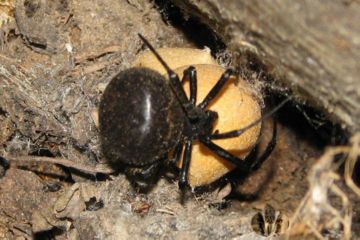

conditions. Bursts of sexual activity occur every 10-15 years of life (July-August), when the female is able to lay up to 130 eggs in one clutch.For reproduction and further residence, the spider chooses secluded dark places (depressions in the soil, near burrows of small animals) and weaves a dense curtain of cobwebs in front of the entrance of its dwelling, thus protecting future offspring.
In the summer, karakurt can migrate in search of an optimal breeding site. After mating, the female lays eggs in small cocoons, from which spiders subsequently hatch from 2 to 5 mm in size.
What do you eat
The main diet of karakurt is made up of small species of insects such as locusts, grasshoppers, beetles and other arthropods.
You can meet a black widow in the steppe zones of not only Russia, but also Ukraine, Moldova, Kazakhstan, Mongolia, North Africa, Afghanistan, Iran, etc.
A significant accumulation of karakurt is observed in the spring-summer period in the Crimea, Astrakhan and Orenburg regions, as well as in the Urals.
What does it eat?
In its natural habitat, the arthropod hunts for small insects. For this, the spider uses a trapping net stretched near the nest. The animal is characterized in part by external digestion. In the body of the victim, entangled in the web, poison is injected, paralyzing the insect and gradually digesting the tissues inside the chitinous cover.
The spider bites the victim from all sides, leaving it intact for a while. It then sucks out the fluidized tissue by puncturing the protective covering. The empty chitinous shell remains hanging in the web for a long time.
Mosquitoes
Given the small size of the spider, mosquitoes are quite suitable as an object for hunting. Insects fall into stretched nets, landing on the ground or grass, becoming victims of karakurt.
The karakurt's web is able to easily hold a fly. When the prey is securely entangled in the web, the spider proceeds to process the victim.
Cockroaches
Even such ancient species of insects are susceptible to a successful attack by karakurt. Like other victims, they are caught by spiders in a similar way - in a trapping web. The sharpness of the jaws of an arthropod allows you to easily break through the chitinous coating in order to start processing the victim.
How many lives?
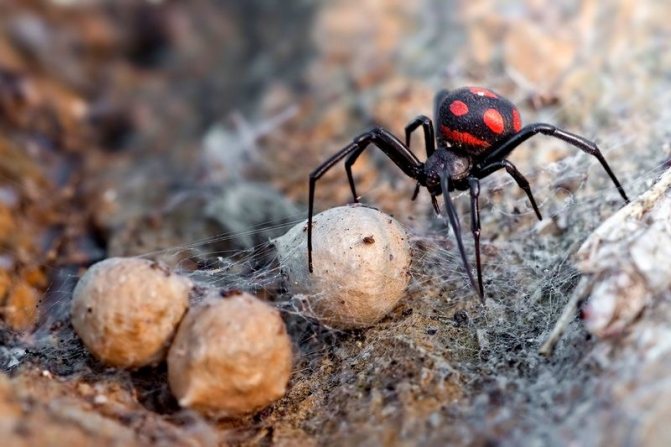

The maximum life span of a karakurt spider is up to five years. Taking into account the peculiarities of mating games of an arthropod, females live significantly longer than males. But the female representatives are sometimes not able to survive the harsh winter. Therefore, these animals prefer warm climates.
But, given the high fertility and the rapid development of offspring even in frosty winters, the population is successfully developing, increasing the number.
External characteristics of the karakurt spider
Let's consider a detailed description of adults. For the appearance, there are several characteristic features of what a karakurt spider looks like.
- Smooth body without hair, which gives the insect a noble appearance, similar to a harmless creature;
- In females that have reached adulthood, the body is in the form of a ball and has a size of 1.5-2 cm. The male has slightly different characteristics.
- Only a male spider is distinguished by the presence of red pronounced spots on its back all its life.
A mortal threat to human life is carried by the poison of this insect, which, penetrating under the skin, slowly kills.
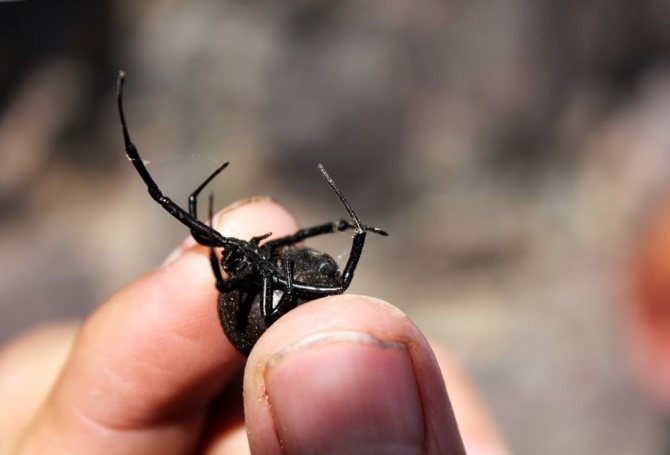

Spider venom
The poison of karakurt is located in the area of the cephalothorax, its glands are connected by ducts with small claws present in the upper jaws. There is also a muscular membrane in the glands, due to the fact that a sharp contraction of the muscles occurs, the victim instantly receives a portion of the poison. The female and the male pose an identical danger, and based on biochemical data, karakurt has poison - TOXABULMIN, it spreads along the paths, and there are several fractions. The sensitivity of warm-blooded victims to poisonous substances varies. The karakurt spider "the appearance is shown in the photo" especially strikes camels, horses, people.
Extraction of karakurt
It becomes both insects and small rodents, whose living space the killer occupies without remorse.
The spider paralyzes the victim, allowing the poison, which acts as a digestive secret, to spread through its tissues. After the insect becomes soft enough, the black widow will thrust the proboscis into it and begin to suck the contents.
During a meal, the spider can be distracted by other activities, move away from the "table" and return again, turn the victim over, sucking it from different sides.
A burrow covered with cobwebs signals danger
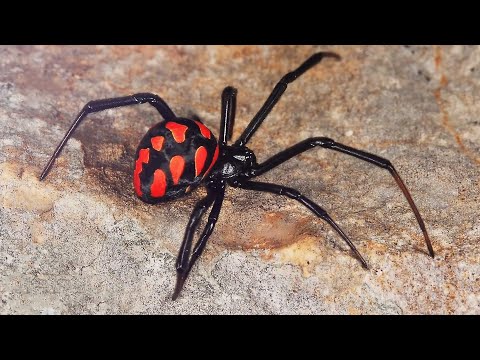

The spider will not attack without reason, which can be any careless intrusion into his private space.
How to prevent a bite
Adults. In habitats of poisonous spiders, try to wear closed shoes and long pants
We offer you to familiarize yourself with: What does a real mole look like?
Pay attention to the cobwebs closer to the ground. Do not camp or picnic in such places.
Just be careful, remember that in Crimea, karakurt are found even on the beaches, in the coastal grass.
Children. Tell your child about karakurt. If you are walking in an area where it can dwell, and you see cobwebs on the ground, change the place for walking to a safer one.
So he weaves a web among the stones
Summarize. Karakurt are dangerous, but not aggressive and attack, mostly due to our carelessness when we get too close to them
Observing the precautions described above, it will allow you to have a hassle-free vacation on hikes in the southern coastal countries.
Video of the fight between karakurt and scorpion
Why are the bites of a karakurt (black widow) dangerous for an animal?
Different animals react differently. For example, horses, camels and many species of rodents can die from the bite of the karakurt venom.
Dogs, hedgehogs, reptiles and amphibians are almost insensitive to the attack of a dangerous spider.
Karakurt (black widow) is a terrifying spider, and for good reason, the bite of its female can be fatal. To protect yourself, you need to take precautions and be careful. When you are in the habitats of karakurt spiders, it is recommended to keep a box of matches with you so that you can cauterize the bite site immediately after the attack.
Dangerous spiders
On the Internet, there are rumors about a low-cost and fabulously profitable business - breeding karakurt to obtain poison.
Those who wish are explained “on fingers” what milking of poisonous arthropods looks like, assuring that this is a simple and safe process that you can master yourself.
In fact, specially trained people are engaged in the extraction of poison, in industrial conditions and on expensive equipment.
To do this, they purchase a special gas (to lull the karakurt to sleep) and the installation of an "operating table" with electrodes necessary to supply a discharge to the chelicerae so that the poison goes away.
The most costly part of the scheme (several tens of thousands of dollars) is the unit for drying the poison, which must turn into crystals.
500 karakurt from one milking yield 1 g of dry toxin, which costs up to 1200 euros on the black market.
Undoubtedly, a profitable business, but it is not for self-taught, singles and amateurs.
Spiders that can cause serious harm to humans include only a few Crimean species with strong poison. For a person to die from, it is necessary that the poison of the arthropod be an allergen for the victim. But some of these animals can cause a lot of trouble. Sometimes the bite is indeed fatal if the serum is not injected in time.
Dangerous spiders found in Crimea:
- karakurt;
- burial spider;
- black eresus;
- Paykull's steatode;
- South Russian tarantula.
On a note!
Until recently, the last species of spider has not been found in Crimea. It was only discovered in 2020.
Karakurt
A medium-sized spider, quite common in the Crimea. Belongs to the genus. The body size of the female is up to 2 cm. The average size of the male is 6 mm.It is not dangerous for a person.
The abdomen of the female is spherical, shiny. Paws are relatively long. The paw span reaches 4 cm. The arthropod is pure black or black with red spots.
The female makes a home for herself in the voids under the stones, under the roots, in the burrows of animals. Often creeps into human dwellings.
The spider is not aggressive. Attacks if disturbed. The female can attack while protecting the cocoons.
Of all the poisonous spiders of Crimea, karakurt is the most dangerous creature. Deaths after his bite are not as frequent as legends tell, but the pain is very serious.
Karakurt are small in size. Their body is spherical, slightly teardrop-shaped. The female is 3-4 times larger than the male. Its size varies from 1 to 2 centimeters. The male is only 5 millimeters long. Spiders are radically black in color, but juveniles may have red or dark orange spots, sometimes with white or yellow outlines.
How does he look in the photo
Another distinctive feature of karakurt is long front legs.
The greatest danger to humans is the female black widow. Only she is able to bite through the skin. This arthropod can even bite through the nail plate of a finger or toe.
If the karakurt is not in immediate danger, he prefers to pretend to be dead, keeping motionless.
The natural reaction of the animal is self-defense. Usually, a spider attacks a person only through direct contact or damage to the trapping web. A spider bites if it is pinned to the ground or pinned by a person's body.
The facts of karakurt bites are more often recorded in the summer season. But occasionally attacks are noted in the winter season, when, due to abnormally warm weather, the biological rhythm of arthropods is lost.
The particular danger of a spider bite is associated with the following circumstances:
- the defeat is painless. A person notices that he has suffered when the poison begins to spread throughout the body. The bite site is initially marked with two small red dots;
- as infection progresses, burning pain spreads throughout the body, passing into the abdomen and chest. It's getting hard to breathe. Death, in most cases, is caused by pulmonary edema and heart problems;
- painful sensations are complemented by a disturbed psychoemotional state, convulsions and involuntary muscle twitching.
In the worst case, the person dies after a day. The total duration of the action of the poison is up to three days. Karakurt poison is especially dangerous for children or people with poor health.
Who is dangerous for karakurt?
Despite the fact that this type of spider is considered the most dangerous in the world, and its bite can kill, the karakurt have their own enemies that can destroy them.
The natural enemies of karakurt are herd animals. Sheep, cows and horses can trample hectares of steppe and destroy all the spiders living there.
Spiders are the diet of some animals and insects. For example, hedgehogs are not at all afraid of karakurt, since the armor made of needles reliably protects them, so they can eat a spider of this species.
Insect riders lay their eggs directly in cocoons made by the female black widow, and their larvae eat the spider nymphs.
Sphex wasps attack spiders, inject them with paralyzing poison, and then kill them.
Habitat
Karakurt prefers an area with a warm climate. This representative of the order of arthropods was especially widespread in such regions as North Africa, Central Asia, southern Europe and Ukraine, Kazakhstan, areas located near the Mediterranean Sea, Crimea, etc. Due to the recent warming, the range of this species has expanded significantly. Now karakurt can be found in the Novosibirsk region, and in the Moscow region, and in Altai, as well as in other, previously unusual places.
We suggest that you familiarize yourself with: Worms in infants: symptoms and treatment
To arrange a nest, the spider chooses dark, inconspicuous holes, crevices, small depressions and even the walls of old houses. Karakurt especially loves the steppe area, various ditches, wastelands, pits. Mostly they are attracted by the rocky surface. Moisture and intense heat repels the spider, and karakurt also does not like dense vegetation.
Karakurt.
The spider prefers warm steppe, semi-steppe, forest-steppe zones of Southern Europe, Central Asia (Iran, Afghanistan), North Africa, southern Russia, Kyrgyzstan, Azerbaijan, Kazakhstan, and is found in the Donetsk region of Ukraine. Common habitats in Russia are Crimea, Altai, Krasnodar Territories, Novosibirsk, Astrakhan, Rostov Regions.
In hot years, karakurt were seen at the latitude of the Moscow region in the process of migration. But usually the Black Widow does not survive the harsh climatic conditions, and such cases are rare. For habitation, the karakurt spider chooses the steppe, arable land, areas near ravines, wastelands, salt marshes.
He avoids open areas, dense grass, humid ravines, hot desert. Rough rocky surfaces are acceptable, similar to the habitat of ferrets and lemmings. Sometimes karakurt is found on abandoned construction sites, but a modern courtyard is no exception. Spiders karakurt perish with the onset of frost in the fall.
Reproduction
It is worth noting that these animals are incredibly fertile. The peak of reproduction in this species of spider begins in the summer, in particular, in July and August. The female lays eggs on the cobweb. So they lie for about a week, they are wrapped in a cocoon. Soon, newborn spiders come out of them, but they leave the cocoon only after winter, in the spring. Young spiders get out of their shelters and are carried by the wind throughout the area. In early summer, spiders reach adulthood and are ready to breed. On hot days, spiders look for safe places to nest and mate.
A female karakurt with eggs.
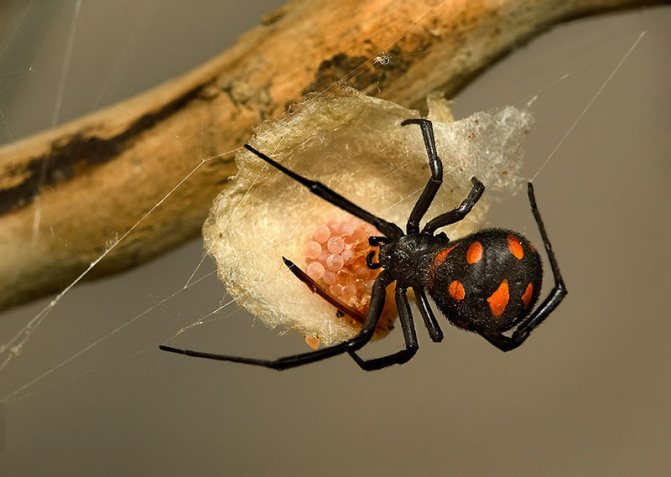

Female karakurt with cocoons.
